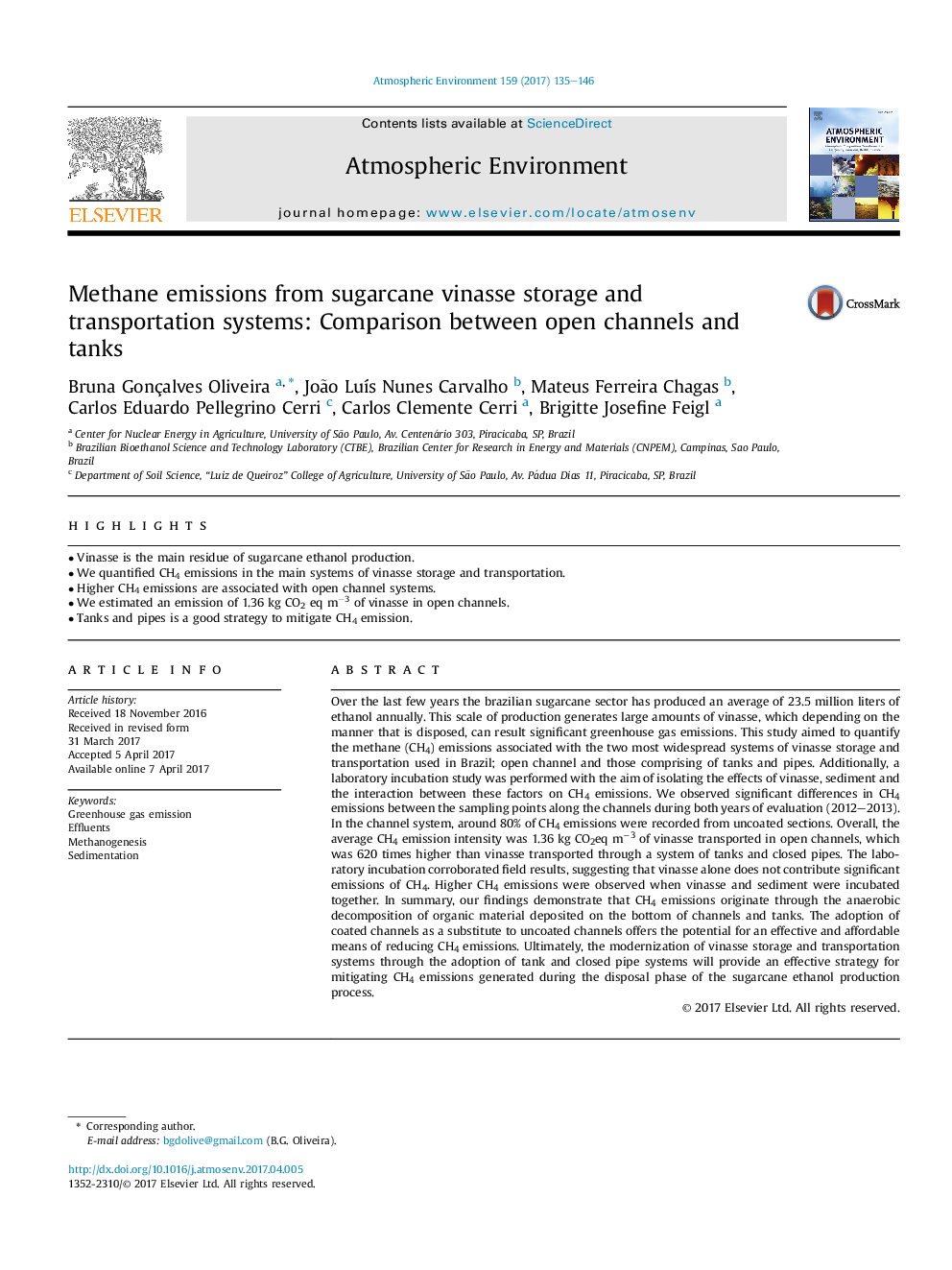| Article ID | Journal | Published Year | Pages | File Type |
|---|---|---|---|---|
| 5753162 | Atmospheric Environment | 2017 | 12 Pages |
Abstract
Over the last few years the brazilian sugarcane sector has produced an average of 23.5 million liters of ethanol annually. This scale of production generates large amounts of vinasse, which depending on the manner that is disposed, can result significant greenhouse gas emissions. This study aimed to quantify the methane (CH4) emissions associated with the two most widespread systems of vinasse storage and transportation used in Brazil; open channel and those comprising of tanks and pipes. Additionally, a laboratory incubation study was performed with the aim of isolating the effects of vinasse, sediment and the interaction between these factors on CH4 emissions. We observed significant differences in CH4 emissions between the sampling points along the channels during both years of evaluation (2012-2013). In the channel system, around 80% of CH4 emissions were recorded from uncoated sections. Overall, the average CH4 emission intensity was 1.36 kg CO2eq mâ3 of vinasse transported in open channels, which was 620 times higher than vinasse transported through a system of tanks and closed pipes. The laboratory incubation corroborated field results, suggesting that vinasse alone does not contribute significant emissions of CH4. Higher CH4 emissions were observed when vinasse and sediment were incubated together. In summary, our findings demonstrate that CH4 emissions originate through the anaerobic decomposition of organic material deposited on the bottom of channels and tanks. The adoption of coated channels as a substitute to uncoated channels offers the potential for an effective and affordable means of reducing CH4 emissions. Ultimately, the modernization of vinasse storage and transportation systems through the adoption of tank and closed pipe systems will provide an effective strategy for mitigating CH4 emissions generated during the disposal phase of the sugarcane ethanol production process.
Related Topics
Physical Sciences and Engineering
Earth and Planetary Sciences
Atmospheric Science
Authors
Bruna Gonçalves Oliveira, João LuÃs Nunes Carvalho, Mateus Ferreira Chagas, Carlos Eduardo Pellegrino Cerri, Carlos Clemente Cerri, Brigitte Josefine Feigl,
